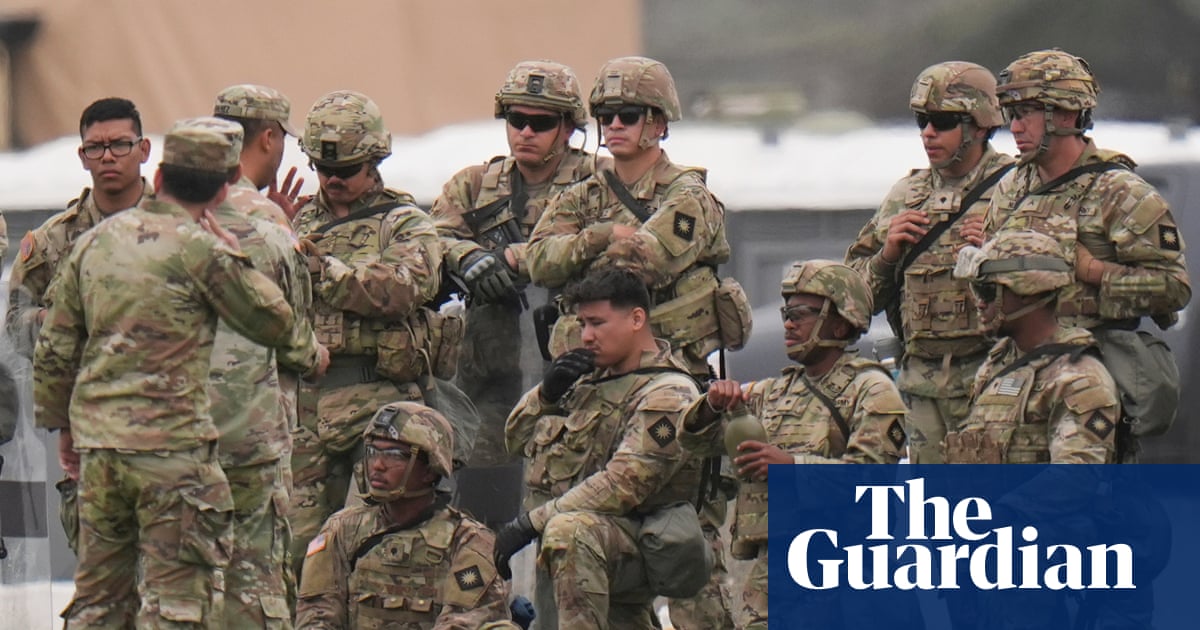A federal judge on Thursday is expected to hear arguments over the request of the California governor,Gavin Newsom, for a temporary restraining order to blockDonald Trumpfrom deploying national guard troops and marines to suppressprotests against immigration raids in Los Angeles.
The hearing, set for 4.30pm ET in federal district court in San Francisco, comes after the presiding judge, Charles Breyer, a Bill Clinton appointee, earlier declined to grant an immediate injunction against the administration.
The request for the restraining order ispart of a lawsuitfiled by the state of California challenging Trump’s move to call up more than 4,000 national guard troops and about 700 active-duty marines based in Twentynine Palms California over Newsom’s objections.
The complaint is largely aimed at the legitimacy of Trump’s order. It sought a judicial declaration to nullify the order and to make clear that it was unlawful for the defense secretary,Pete Hegseth, to bypass Newsom in federalizing the state’s national guard forces in this instance.
The hearing is expected to focus on theTitle 10 statuteinvoked by Trump, which allows the president to federalize the national guard if there is a “rebellion or a danger of rebellion”, or if the president is “unable with regular forces to execute the laws of the United States”.
Although pockets of protests turned violent – some threw rocks at law enforcement vehicles and set alight a series of driverless Waymo cars – local authorities inLos Angelescounty did not say they needed federal assistance.
TheCaliforniaattorney general, Rob Bonta, is expected to argue that Trump needed Newsom’s approval or request for such a mobilization, and that there was no basis to bring in national guard forces because the protests did not rise to the level of a rebellion.
But theTrump administrationhas suggested that the decision of whether to federalize the national guard was at the discretion of the president, and that federal courts cannot second-guess decisions by the executive branch as to whether the military was needed.
In its29-page responseto the lawsuit, the justice department also said Newsom was misrepresenting the situation because the military was always only going to be used in a protective function and not to perform law enforcement functions.
The justice department cited memos from the office of legal counsel, written by William Rehnquist before he became chief justice of the United States, which suggested the military could be used to protect federal buildings from anti-war protesters during the Vietnam war.
The memos envisioned the president relying upon his inherent authority in the US constitution as the commander-in-chief of the armed forces, possibly to get around the limitations of the Posse Comitatus Act, which makes it illegal for the military to perform a law enforcement function on domestic soil unless the president has invoked the Insurrection Act, which Trump has not. The memos have never been legally tested in court.
Sign up toThis Week in Trumpland
A deep dive into the policies, controversies and oddities surrounding the Trump administration
after newsletter promotion
The justice department also contended that the Trump administration had complied with the statute in full with respect to the governor’s putative role, because it had notified Newsom of Trump’s intentions to deploy the national guard and marines before they were implemented.
Trump has been suggesting the idea of deploying troops against Americans since his first term, when some Black Lives Matter protests in the summer of 2020 turned violent. He opted against doing so at the time, but hassince expressed regret to advisersthat he did not punish the protesters more aggressively.
Notably, during a campaign rally in 2023, Trump vowed to respond more forcefully if elected to a second term. “You’re supposed to not be involved in that, you just have to be asked by the governor or the mayor to come in,” he said of the president’s usual role in deciding whether to send in the military. “The next time, I’m not waiting.”
